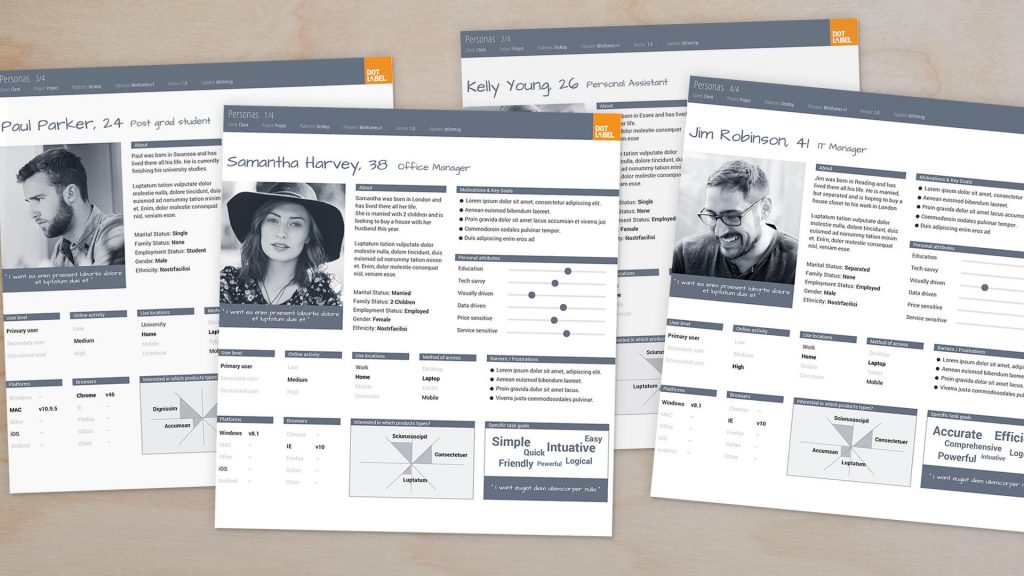UX Based SEO: The Importance of Research & Analytics in Creating User-Focused Web Design

Anyone who manages a website understands that visibility on search engines is a vital way to drive free (organic) traffic to their site. However, the algorithms that determine the ranking factors are ever evolving and are a bit of an educated guessing game.
As Google’s (and the other search engines’) success is judged based on the relevance and quality of the results they return, they want to ensure they are meeting the expectations of their users to make sure they remain the ‘go-to’ gateway for accessing websites on the internet.
It’s for this reason that User Experience (UX) and SEO go hand-in-hand. By providing an engaging and relevant online experience to your users it means they will spend more time on your site, which in turn sends important signals to the search engines on how well to rank the site.

How Does Google Rank Websites?
In truth, no-one apart from Google really knows the complete answer to that. The ways in which the World’s most popular search engine ranks a site has evolved over the years to ensure that its algorithms deliver the best and most relevant search results that people are looking for.
It is believed that there are over 200 ranking factors which search engines look at beyond keywords and link building to determine what constitutes a good result.
Introduced in 2015, RankBrain is a machine-learning, artificial intelligence program that is considered to be the third most important factor in determining the SEO value of a site after content and links.
RankBrain looks at the intent of the user and what they mean by their search query. How well a site fulfils the needs and expectations of a visitor can be assessed by the ‘Behaviour metrics’ which considers how a site is used, e.g. pages per session, bounce rate, dwell time and organic click-through rate.
If a user repeatedly visits a site and spends a reasonable amount of time exploring around the site, it is a positive signal to the search engines that the site is providing a good user experience.
In contrast, if someone leaves a site as soon as they arrive and return straight back to the search results, it suggests the site didn’t provide relevant information and can, therefore, affect its ranking.
So, How Can Understanding UX Help with SEO?
We know that providing an engaging and relevant experience will keep users onsite for longer, but how do we achieve that?
User Experience is commonly mistaken for purely just User Interface (UI) Design i.e. what the website looks like on screen, however, it is a much broader discipline. User Experience is concerned with understanding the needs, wants and expectations of its users and then optimizing the entire experience to deliver an effortless and efficient online journey.
Peter Morville created the UX Honeycomb which identifies the different facets of User Experience. He states that in order for valuable and meaningful user experience to existing the information should fulfill the following qualities.

How to Create an Engaging & Relevant Online Experience
What makes an online user experience relevant, engaging and easy to use is different for different users. The role of UX research is to understand, in depth, the user groups.
Exploring what the different user types want to achieve, what is (and is not) important, what frustrates them and what they expect will inform how to approach the content, design, and development of a site.
All too often businesses skip this important stage and rely on best guesses and assumptions to decide how to design a website, intranet, web application or portal. This then leads to expensive changes needed to be made after launch when they realize users aren’t interacting in the way they expected them to.
What Research is Used in UX?

If you don’t consult your users and are not actually doing any user research, how can you claim to be really focused on the user?
User Experience methodology applies a number of techniques to inform decision making throughout the design and development process of a website or application.
Research can be obtained from a variety of sources including user research, stakeholder research, raw data and analytics, competitor research and UX expert insight.
User Research
User research is one of the most important sources for effective UX. Conducting workshops, interviews, and surveys with end users to gain direct feedback on their needs, wants, expectations, frustrations, motivations, and predispositions will provide a wealth of valuable insight which, as well as directing the digital experience design and build, can also inform the wider business about how to better serve its customers.
Stakeholder Research
Stakeholders can also play an important role in providing insight, not only in terms of the organization’s goals, but customer-facing staff will have the first-hand experience in hearing the frustrations and aspirations of clients. When access to end users isn’t possible, this is often the next best option to understand the end users.
Raw Data & Analytics
Raw data, such as stats from web analytics can reveal the actions users are taking. Whether it’s popular pages and dwell time, online behavior flow and significant drop-out points, heat mapping or click trails. These stats are useful to identify what is happening and what actions users are taking on your site, however, used in isolation the data can be misleading.
It is important to also look beyond Google Analytics and with user research understand ‘why’ users are taking certain actions. When you combine the quantitative research from Google Analytics with qualitative user research provides extremely powerful insight to really understand how to make the best changes which will have the biggest impact.
Competitor Research
Looking at competitors can be very useful. Not just concentrating on direct competition but also looking wider to indirect competitors and businesses in other sectors. Rather than trying to replicate what someone else is doing, sometimes the best solutions are inspired by looking at how another business in a completely different industry solved their challenges.
UX Expert
UX industry best practice insight isn’t something that can be blindly applied to a digital experience to automatically improve it. A UX expert who works day-in-day-out on user experience projects and keeps up to date with the latest developments will understand when a particular approach is appropriate or not.
For example, it is often thought that the fewest number of clicks always produces the best online experience – this is a myth!
For complex forms actually breaking down the information into manageable chunks improves accuracy and offering a ‘save option’ helps increase the chances of completion.
In addition, it isn’t just the user interface design that a UX professional will seek to improve, but optimizing experience on the device, for example, optimising UX for mobile conversion would consider the features and functionalities such as the use of the camera, gyroscope, and GPS to improve the experience.

How is UX Research Turned in Insight?
When the research is gathered it is turned into actionable insight that will influence how a digital product is designed and built.
To begin with, the research is used to profile typical consumer these are known as ‘User Personas’. The personas include detailed information about the consumer – not just their demographics such as age and income, but more importantly, their needs, wants, frustrations, expectations, and predispositions. It includes how tech-savvy they are, what is important and not important to them, their user behavior and pain points.
The user goals are defined and the tasks undertaken to achieve these goals are mapped. These elements are then brought together along with documented scenarios to create a suite of ‘User journeys’.
User Journeys plot key online paths that different users’ types take on a website, platform or portal. By identifying the most important journeys i.e. most valuable or frequently taken, it is possible to expose issues and potential obstacles, and then optimize the experience to enhance efficiency, engagement or conversion (depending on what the goals are).
How to Translate the Insights Into a Great User Experience
With a deep understanding of how users navigate through a site, the page layouts can be revised to ensure that key information is easy to find, removing any irrelevant distractions and optimizing the user’s journey ensuring it is ‘easy’ to reach their goal.
Wireframes and prototypes are a cost-effective way to create and test proposed solutions and they can be easily tweaked until they are perfect. It can cost up to 100 times more to fix a problem after development than before, so it makes sense to check end users are happy with the digital experience before launching straight into the design and development stages, leaving the testing until the launch phase.
Conclusion
To create a digital solution that is truly user-focused and meets the needs want and expectations of the target audience, it is so important for both marketers and web designers to understand how UX impacts SEO.
By providing a good online customer user experience that engages the users it will naturally positively affect the usage metrics, which have a direct impact on SEO.
To achieve a great user experience, it does require an investment in understanding your end users with insights drawn directly from research. The rewards, however, will be fruitful as not only will you be satisfying the needs of your customers and potential customers, you will also be loved by Google.





